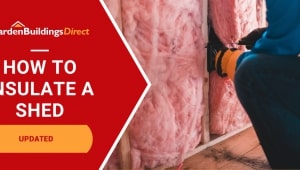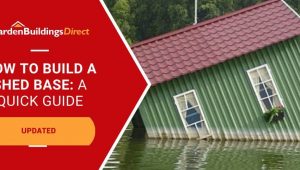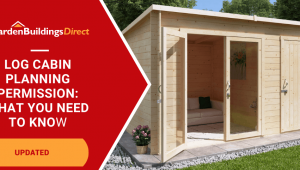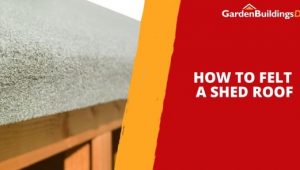Jump to:
When choosing the best material for garden storage, your choice can make a difference in appearance, maintenance, and longevity. But what are your options?
Whether you’re looking at a full-size shed for large gear, a cabinet for tools, or a storage box for cushions, the materials matter. Let’s compare wood, metal and heavy-duty plastic and how they protect your items while complementing your garden.
Wood in Garden Storage
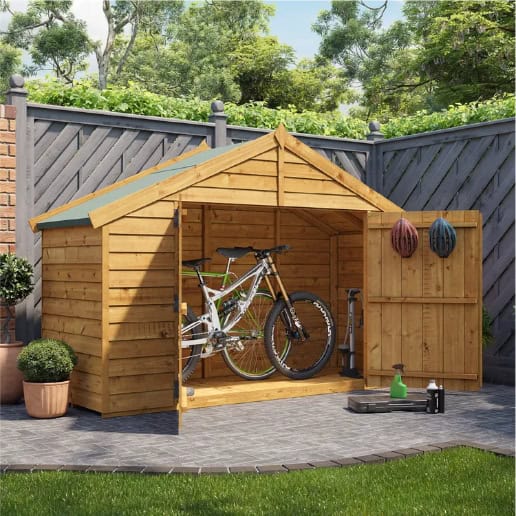
Wood is a strong, flexible, and common choice for garden storage, like sheds. It has a classic charm to it, adding a warm, rustic feel when set up in gardens. It’s also favoured by homeowners who want flexibility to customise, like with paint, as wood can be stained to match different styles.
When it comes to strength, timber is undeniably durable, especially if it’s treated, e.g., through pressure treatment. This treatment is standard in many models, including storage cabinets, but it usually costs more than untreated ones. It’s a worthwhile investment, though, as it cuts the need for maintenance and repairs.
And how can we not mention the popular tongue and groove (T&G) construction? T&G is a special method where boards slot together like puzzle pieces, creating a protective outer layer. This design improves insulation and weather resistance. For this level of quality and finish, look no further than tongue and groove sheds.
But that’s not all—timber can regulate temperature and moisture inside garden storage. To give you an idea, here’s what can happen to wooden sheds when it’s too hot. This highlights their upkeep demands, so keep that in mind when considering this material for your storage needs.
Metal in Garden Storage
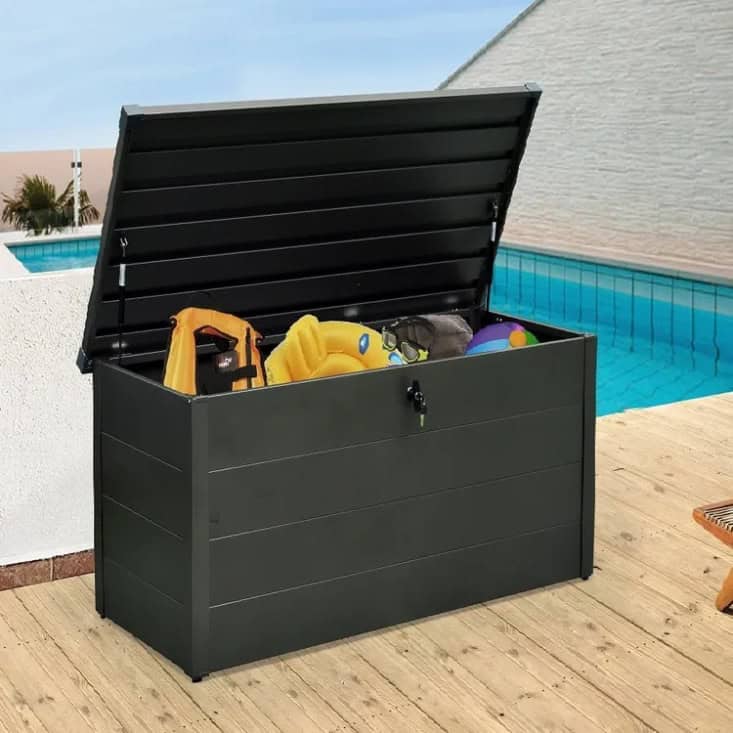
Metal garden storage is incredibly strong, thanks to its innate heavy-duty material. Not only are they weather- and insect-resistant, but they’re also fire-resistant. The material itself has a much higher melting point, so it conducts heat away from a fire rather than catching it. This is a huge advantage if reducing fire risks is a priority for your property.
Did we mention that they require very little maintenance, especially those made from galvanised and powder-coated steel? Not to mention they’re easy on the wallet?
Metal is lower cost to manufacture into shed parts, making it a cheaper shed material. And here’s the best bit—no need for annual re-staining or reapplying UV protectants. These upfront savings can make a big difference if you’re on a budget or keen to keep costs down.
But there’s a catch: rust. While metal resists many elements, it can still rust if its coating becomes damaged and the bare metal is exposed. Regular maintenance, once again, is needed.
For tips that actually work, take a look at this guide: How to Stop a Metal Shed from Rusting
Plastic in Garden Storage
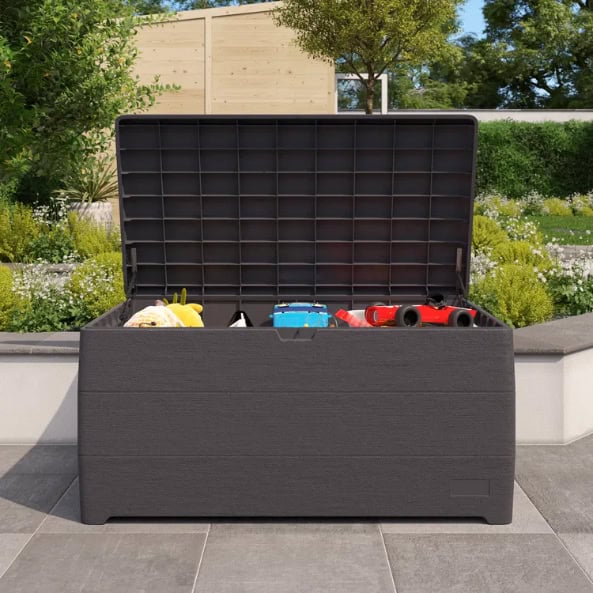
You might assume plastics are weak materials by definition, but the truth is quite the opposite. Modern plastics used in sheds and storage boxes are surprisingly strong, adaptable, and easy to care for.
Two popular materials used are vinyl and polycarbonate. Vinyl is made from PVC (polyvinyl chloride). It’s strong and handles the weather well, but over time, it can crack or fade if not cared for. Polycarbonate is a tougher type of plastic. It hardly ever breaks, fades, or cracks, and it’s lighter and easier to put together than vinyl.
Plastic garden storage, in general, is more resistant to pests and insects than wood sheds. This is because plastic materials provide less favourable conditions for pests to infest. This reduces the risk of damage from termites, rodents, or other insects.
Even better, they can withstand harsh weather conditions and are UV-resistant. This means they won’t fade or crack under prolonged sun exposure.
Of course, there are some downsides. To start, the material isn’t fire-resistant and can be susceptible to dampness under certain conditions. In this guide, ‘Do Plastic Sheds Get Damp?’, we look at what causes moisture build-up and how to stop it.
Round-up
Garden storage comes in wood, metal, and plastic. Each type has its own strengths and weaknesses. Many of the downsides come from neglect, which you can avoid with the right care. Think about what you want and how much maintenance you’re happy to do.
You can check out a wide range of our garden sheds for sale. This guide can also help you decide: What Shed Size Should You Buy?
FAQ
What’s the best material for garden storage?
It depends on the look you want, how much upkeep you’re happy with, and how long you need it to last.
Wood looks great and can last for years if you look after it. Metal is strong and durable, though it might rust. Plastic is easy to care for and lightweight, but it can fade or crack over time.
What counts as garden storage?
Anything that stores and protects your outdoor items counts as garden storage. Examples include sheds, storage boxes and cabinets, storage benches, bin storage, log stores, and more.
